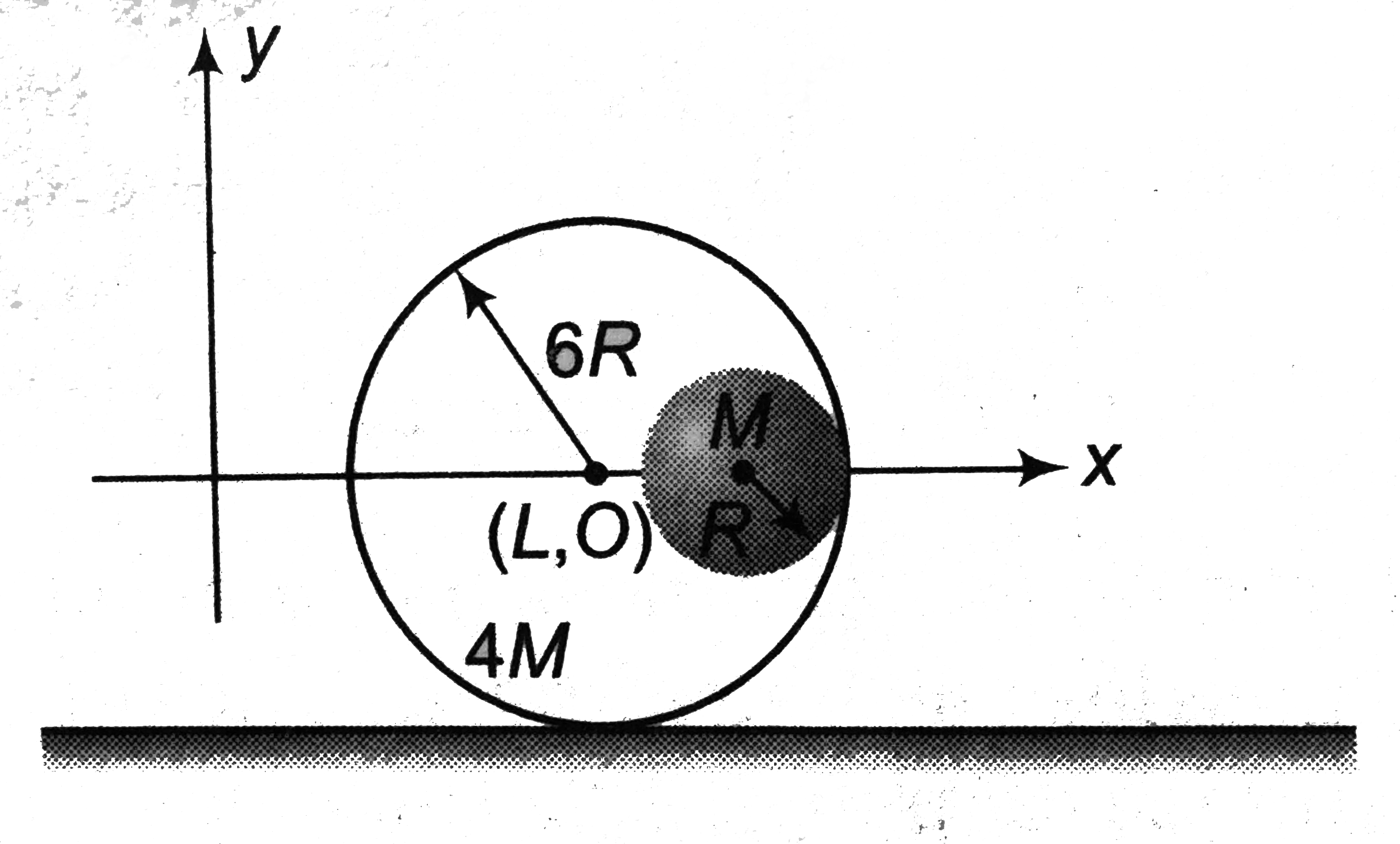NA spheres of radius 'R' are melted in x×NA smaller spheres, so that when fcc lattice is generated from smaller spheres the edge length is formed to be 256R.Find x.
The correct Answer is:4
To solve the problem, we need to determine the value of x given that NA spheres of radius R are melted into x×NA smaller spheres and that the edge length of the FCC lattice formed from these smaller spheres is 256R.
1. Volume of the Larger Spheres:
The volume of one larger sphere of radius R is given by:
Vlarge=43πR3
Therefore, the total volume of NA larger spheres is:
Vtotal large=NA×43πR3
2. Volume of the Smaller Spheres:
Let the radius of the smaller spheres be r. The volume of one smaller sphere is:
Vsmall=43πr3
Therefore, the total volume of x×NA smaller spheres is:
Vtotal small=x×NA×43πr3
3. Equating the Volumes:
Since the total volume of the larger spheres is equal to the total volume of the smaller spheres, we can set the two expressions equal to each other:
NA×43πR3=x×NA×43πr3
Canceling NA and 43π from both sides gives:
R3=xr3
4. Relating the Radii:
In a face-centered cubic (FCC) lattice, the relationship between the edge length a and the radius r of the spheres is given by:
a=2√2r
We are given that the edge length a is 256R, which can be expressed as:
a=176R
5. Setting Up the Equation:
Substituting the expression for a into the FCC relationship gives:
176R=2√2r
Rearranging this to find r:
r=1712√2R
6. Substituting r Back:
Now, substitute r back into the volume equation:
R3=x(1712√2R)3
Simplifying this gives:
R3=x(173123⋅23/2R3)
Canceling R3 from both sides leads to:
1=x⋅173123⋅23/2
7. Solving for x:
Rearranging gives:
x=123⋅23/2173
Calculating the values:
- 123=1728
- 23/2=2√2≈2.828
- 173=4913
Plugging in these values:
x=1728⋅2.8284913≈4
Final Answer:
The value of x is 4.
The volume of one larger sphere of radius R is given by:
Vlarge=43πR3
Therefore, the total volume of NA larger spheres is:
Vtotal large=NA×43πR3
Let the radius of the smaller spheres be r. The volume of one smaller sphere is:
Vsmall=43πr3
Therefore, the total volume of x×NA smaller spheres is:
Vtotal small=x×NA×43πr3
Since the total volume of the larger spheres is equal to the total volume of the smaller spheres, we can set the two expressions equal to each other:
NA×43πR3=x×NA×43πr3
Canceling NA and 43π from both sides gives:
R3=xr3
In a face-centered cubic (FCC) lattice, the relationship between the edge length a and the radius r of the spheres is given by:
a=2√2r
We are given that the edge length a is 256R, which can be expressed as:
a=176R
Substituting the expression for a into the FCC relationship gives:
176R=2√2r
Rearranging this to find r:
r=1712√2R
Now, substitute r back into the volume equation:
R3=x(1712√2R)3
Simplifying this gives:
R3=x(173123⋅23/2R3)
Canceling R3 from both sides leads to:
1=x⋅173123⋅23/2
Rearranging gives:
x=123⋅23/2173
Calculating the values:
- 123=1728
- 23/2=2√2≈2.828
- 173=4913
x=1728⋅2.8284913≈4
The value of x is 4.
Topper's Solved these Questions
Similar Questions
If the radius of a sphere is 2r , them its volume will be
View SolutionA hollow sphere of radius 2R is charged to V volts and another smaller sphere of radius R is charged to V/2 volts. Then the smaller sphere is placed inside the bigger sphere without changing the net charge on each sphere. The potential difference between the two spheres would becomes V/n. find value of n
View SolutionA hollow sphere of radius 2R is charged to V volts and another smaller sphere of radius R is charged to V/2 volts. Now the smaller sphere is placed inside the bigger sphere without changing the net charge on each sphere. The potential difference between the two spheres would be
View SolutionA small sphere of radius R is held against the inner surface of a larger sphere of radius 6R. The mass of large and small spheres are 4M and M respectively. This arrangement is placed on a horizontal table. There is no friction between any surface of contact. The small sphere is now released. The x coordinate of the centre of the larger sphere when the smaller sphere reaches the other extreme position, is found to be (L+nR) , find n.
View SolutionA small conducting sphere of radius r is lying concentrically inside a bigger hollow conducting sphere of radius R. The bigger and smaller spheres are charged with Q and q(Q>q) and are insulated from each other. The potential difference between the spheres will be
View SolutionA solid cone of radius 5 cm and height 8 cm is melted and made into small spheres of radius 0.5 cm. Find the number of spheres formed.
View SolutionA sphere of radius 6 cm is melted and reacst in to a cone of height 6 cm .Find the radius of the cone.
View SolutionA sphere of radius R and charge Q is placed inside an imaginary sphere of radius 2R whose centre coincides with the given sphere. The flux related to imaginary sphere is:
View SolutionTwo spheres of same metal weight 1 kg and 7 kg .The radius of the smaller sphere is 3cm .The two spheres are melted to form a single big sphere.Find the diameter of the new sphere.
View SolutionA small sphere of radius R is held against the inner surface of larger sphere of radius 6R (as shown in figure). The masses of large and small spheres are 4M and M respectively. This arrangement is placed on a horizontal table. There is no friction between any surfaces of contact. The small sphere is now released. Find the coordinates of the centre of the large spheres, when the smaller sphere reaches the other extreme position.
 View Solution
View Solution

